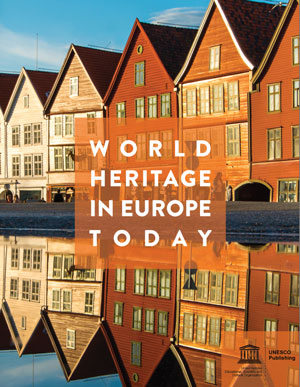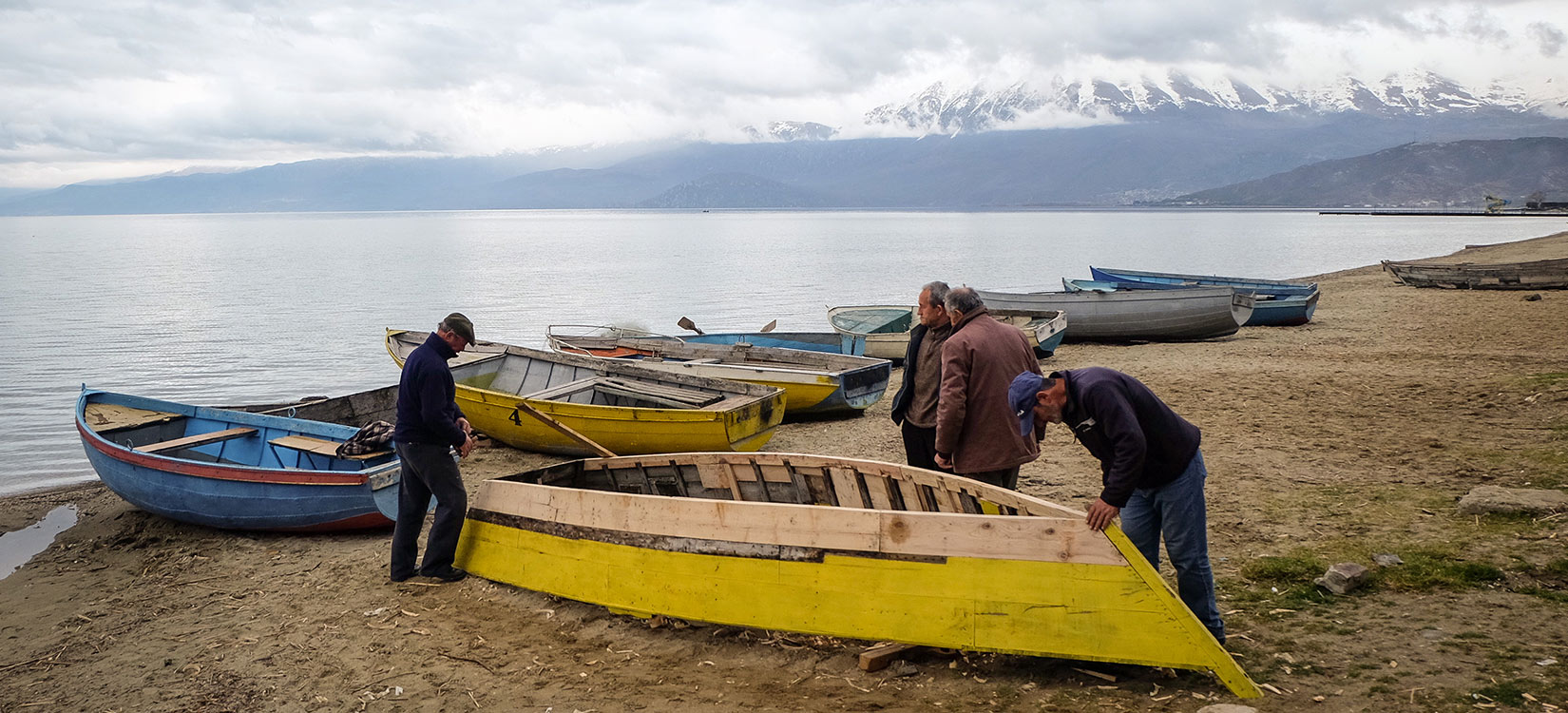Cultural Properties
Mixed Properties
Natural Properties
Transboundary properties
Properties in Danger
Periodic Reporting
Periodic Reporting is a global conservation monitoring mechanism that aims to provide an opportunity for key stakeholders in World Heritage properties (national authorities, site managers, Focal Points responsible for the implementation of the World Heritage Convention at national level and local communities) to reflect on the implementation of the World Heritage Convention and to take stock of matters relating to the identification, conservation, protection and presentation of World Heritage sites, at the local, national and regional levels.
Every six years, States Parties to the World Heritage Convention are invited to carry out a Periodic Reporting exercise on World Heritage on their territory, which allows respondents to provide a self-assessment of the implementation of the World Heritage Convention and facilitates the updating of information on properties, recording any evolution in their state of conservation.
The Third Cycle
of Periodic Reporting
in Europe and North America
The Third Cycle of Periodic Reporting exercise in the Europe and North America region was launched in 2022, following Decision 41 COM 10A (Krakow, 2017), in accordance with Article 29 of the 1972 Convention Concerning the Protection of the World Cultural and Natural Heritage.
The reporting exercise took place from September 2022 to July 2023 and involved all 51 States Parties in the region and over 500 World Heritage properties. The online questionnaire was completed by the national Focal Points responsible for implementing the Convention and the World Heritage site managers, with assistance from UNESCO (both through its World Heritage Centre and its Regional Bureau for Science and Culture in Europe) and the Advisory Bodies to the World Heritage Committee (ICOMOS, ICCROM and IUCN).
A two-day kick-off meeting was organised online for the national Focal Points on 20-21 October 2022 in order to facilitate the reporting process and a workshop was held at UNESCO Headquarters from 19 to 21 December 2023 to draw up the Regional Action Plan based on the preliminary results of the analysis of the periodic reports submitted by the States Parties in the region.
Earlier, the National Focal Points for the implementation of the World Heritage Convention and the national cultural and natural heritage institutions of South East Europe met in Kotor, Montenegro, to take stock of the implementation of the Helsinki 2015 Action Plan, to discuss the preliminary results of the Third Cycle of Periodic Reporting and to define the subregion's aspirations for the Regional Action Plan for Europe and North America for the coming years.
As a result of the reporting process, a Regional Report and a Regional Action Plan have been prepared by UNESCO World Heritage Centre and World Heritage experts together with the Advisory Bodies of the World Heritage Committee in close consultation with the national Focal Points. This is the first Regional Action Plan that brings together Europe and North America together. The World Heritage Committee welcomed the Third Cycle Regional Report and endorsed the Third Cycle Regional Action Plan at its 46th session (New Delhi, 2024), by Decision 46 COM 10A.
TOWARDS 2030: A new roadmap for Europe and North America’s commitments to the World Heritage Convention.
Presentation of the 2024-2031 Regional Action Plan of Europe and North America
Side-event to the 46th session of the World Heritage Committee, New Delhi, India
Invitation Programme
The highly collective and participatory effort behind the new Regional Action Plan has been made possible by the generous support of the Governments of Ireland and Germany.
Periodic Reporting is driven by States Parties and provides an opportunity for regional cooperation and exchange. States Parties in the region are invited to implement the Regional Action Plan resulting from the Third Periodic Reporting Cycle by developing National Action Plans adapted to their own needs and challenges.
Previous Periodic Reporting cycles
First Cycle
The First Cycle of Periodic Reporting was carried out from 2001 to 2006 for Europe, and from 2001 to 2005 for North America, and was largely experimental in nature. It involved 50 States Parties to the Convention throughout Europe and North America, and 275 World Heritage properties, of which 244 were inscribed in Europe before 1998 and 31 properties in North America at the time of reporting.
Two sub-regional programmes, ‘Recommendations and Plan of Action for North America’ and ‘Action Plan for Europe’ were adopted by the World Heritage Committee to strengthen the implementation of the World Heritage Convention and to enhance the conservation process at World Heritage properties in the region. The outcomes of the Periodic Reporting exercise for Europe were published in 2007 (World Heritage Paper Series, n°20).
Second Cycle
The Second Cycle of Periodic Reporting in Europe and North America involved 51 States Parties to the Convention. At the regional level, the exercise involved 468 World Heritage properties inscribed between 1978 and 2013.
Two reports summarising the outcomes of the Second Cycle of Periodic Reporting were presented to the World Heritage Committee at its 38th session (Doha, 2014) (Document WHC-14/38.COM/10A) for North America, and at its 39th session (Bonn, 2015) (Document WHC-15/39.COM/10A) for Europe. Subsequently, two subregional action plans were adopted by the Committee: the ‘Action Plan for North America’ and the ‘Framework Action Plan for Europe’ (known as a the ‘Helsinki Action Plan’).
A follow-up survey of the Framework Action Plan for Europe was noted by the 41st session of the World Heritage Committee (Krakow, 2017).
World Heritage in Europe Today
World Heritage in Europe Today is a UNESCO publication which brings together the insights, challenges and success stories of the thousands of people who were directly involved in the Second Cycle of Periodic Reporting, sharing with their experience with the wider public and showcasing some of the most outstanding outcomes of the reporting through this publication, including the conservation and management efforts to protect the Outstanding Universal Value of over 500 sites that were inscribed at that time on the World Heritage List in this subregion.
Follow the activities in the Europe and North America region
For information on all the activities in the region:
Renewable energy transition related activities
Climate change is an urgent global challenge, the effects of which are increasingly being felt by natural and cultural World Heritage sites and communities around the world. Renewable energy is one of the key solutions to mitigate climate change and substantially increasing its share in the global energy mix by 2030 is one of the targets of the 2030 Agenda for Sustainable Development.
Balancing the growing and legitimate demand for renewable energy with the equally imperative need to protect heritage can be achieved through careful planning, consideration of heritage values, and constructive and informed dialogue between all stakeholders. UNESCO World Heritage Centre is firmly committed to developing the necessary tools to accompany and guide this dialogue The World Heritage Committee has recognised the negative impacts of climate change on World Heritage properties, but also their potential to become laboratories for adaptation and mitigation policies and practices.This dual facet of World Heritage is reflected in both the Policy for the Integration of a Sustainable Development Perspective into the Processes of the World Heritage Convention and in the revised updated Policy Document on Climate Action for World Heritage, as adopted by the General Assembly of States Parties to the World Heritage Convention in 2015 and 2023 respectively.
Support and guidance tools have been developed with input from States Parties in Europe and North America. The Guidance for Wind Energy Projects in a World Heritage Context provides easy-to-understand and user-friendly information on wind energy projects and World Heritage protection and management, and highlights processes and tools for overcoming potential challenges that may arise.
World Heritage and wind energy planning presents inspiring practices from four countries in Europe in relation to protecting visual integrity in the context of the energy transition.
World Heritage Online Map Platform
Europe and North America was the pilot region for the World Heritage Online Map Platform, the first online geographic information system for World Heritage which has been developed to harness remote sensing and earth observation technologies for more effective monitoring, management and protection.
Recovery and Reconstruction
As part of UNESCO’s action in Ukraine, a project supported by Japan for $4 million is enabling UNESCO World Heritage Centre, in close cooperation with ICOMOS and ICCROM, to strengthen Ukraine’s capacity to address urgent cultural heritage protection and recovery needs through the development of emergency preparedness and mitigation plans. These funds also enable the assessment of damage to cultural property using satellite images.
Follow the activities- World Heritage Online Map Platform
- Renewable Energy Transition and World Heritage
- UNESCO-Greece Melina Mercouri International Prize For The Safeguarding And Management of Cultural Landscapes
- World Heritage and wind energy planning
- World Heritage in Europe Today
- #OurLakeOhrid Photo & Story Contest
- UNESCO Cultural World Heritage Sites in Europe
- Follow-up of the First Cycle of the Periodic Reporting exercise in Europe and North America (2006-2011)
- Periodic Reporting 2nd Cycle: Europe and North America region (2012-2015)
- Periodic Reporting 1st Cycle: Europe and North America
- Towards 2030: A new roadmap for Europe and North America’s commitments to the World Heritage Convention 29-Jul-2024
- National Monuments Service World Heritage Scholarship Programme 08-Jul-2024
- Ukraine: Nearly 30 States pledge to support UNESCO's efforts in the recovery of the cultural sector 07-Jun-2024
- Artist Paul Wiersbinski awarded the 2024 World Heritage Residence Scholarship 30-Apr-2024
- Ukraine: UNESCO paves the way for the rehabilitation of Chernihiv’s historic centre 09-Apr-2024
- Auschwitz: Historic agreement signed at UNESCO between the Successor States of Yugoslavia 12-Feb-2024
- UNESCO and the Boston Museum of Science launch an exhibition on World Heritage 19-Jan-2024
- Germany supports UNESCO World Heritage projects 22-Dec-2023
- Netherlands renews commitment to support UNESCO World Heritage projects 01-Dec-2023
- Call for evaluator to carry out external evaluation of the UNESCO-Greece Melina Mercouri International Prize (2017-2023) 27-Nov-2023
- 46 COM Side Event: Presentation of the 2024-2031 Regional Action Plan of Europe and North America 29-Jul-2024-29-Jul-2024
- 46 COM Side Event: The World Heritage Convention and the demonstration of Free, Prior and Informed Consent (FPIC) 24-Jul-2024-24-Jul-2024
- World Heritage Coastal Defence Systems in Europe and the Caribbean 23-Apr-2024-25-Apr-2024
- UNESCO’s efforts to develop guidance on renewable energy in the context of World Heritage will be extended to solar energy projects 05-Mar-2024-06-Mar-2024
- Europe and North America ready to embark on developing a new Regional Action Plan for the implementation of the World Heritage Convention 19-Dec-2023-21-Dec-2023
- Warsaw Recommendation – Introduction to Heritage Recovery Online Workshop Session 24-Nov-2022-24-Nov-2022
- 5th Edition of The Heritage Night 17-Sep-2022-17-Sep-2022
- European Heritage Days: UNESCO celebrates 50 years of World Heritage 17-Sep-2022-18-Sep-2022
- Heritage, World Heritage, and the Future: Perspectives on Scale, Conservation and Dialogue 05-Dec-2019-06-Dec-2019
- A new network of young cultural heritage professionals emerges from a UNESCO/EU project 20-May-2019-24-May-2019

